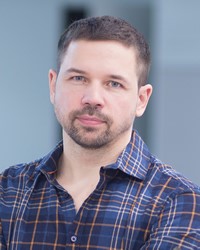Komi-Zyrian in Finland

Photo Source:
Copyrighted © 2026
Potashev Aleksandr - Shutterstock All rights reserved. Used with permission |
Send Joshua Project a map of this people group.
|
| People Name: | Komi-Zyrian |
| Country: | Finland |
| 10/40 Window: | No |
| Population: | 1,200 |
| World Population: | 150,100 |
| Primary Language: | Komi-Zyrian |
| Primary Religion: | Christianity |
| Christian Adherents: | 70.00 % |
| Evangelicals: | 2.00 % |
| Scripture: | Complete Bible |
| Ministry Resources: | Yes |
| Jesus Film: | Yes |
| Audio Recordings: | No |
| People Cluster: | Finno-Ugric |
| Affinity Bloc: | Eurasian Peoples |
| Progress Level: |
|
Introduction / History
Komi is the name used by a group of indigenous peoples. They are divided into subgroups, the most prominent being the Yazva, Permyat and Zyrian. All three have their own dialect, though they also speak the local trade language. The Zyrian live further north and the Permyat live south of other Komi groups in Russia. They also have smaller subgroups based on location.
The Komi had their first contact with the Russians in the 1100s when Russian Orthodox missionaries such as Stephen Permski came to the region. In the 1500s, Russian settlers moved eastward, settling in the Komi homeland and trying to get them to assimilate to Russian culture. Russians also set up a penal colony in the region. The Komi peoples rebelled a number of times, most notably in the 1860s. Russia temporarily lost control of the region after the 1917 Russian Revolution but re-established control in 1919. The new Soviet government tried to integrate minorities like the Komis, but they also industrialized the area, which devastated the traditional Komi way of life. Dictator Josef Stalin killed most Komi leaders for being bourgeois nationalists. The Komi region was also used for gulag prison camps. The influx of Russian prisoners left the Komi as a minority in their own land. After the USSR dissolved in 1991, the Komi people have been trying to re-establish their language and culture. Still, the Komi population continues to decline along with the populations of other indigenous peoples in that region. A small number have migrated to nearby countries. The Zyrian subgroup also lives in Ukraine and Finland.
What Are Their Lives Like?
Most Komi people live in urban areas where they live alongside other ethnic groups. They have their own cuisine. Their clothing styles vary according to region, but they also dress like the local population.
What Are Their Beliefs?
There is a large Russian Orthodox influence among the Komi peoples. Some are vibrant Christians; others are Christian in name only. Most also adhere to their traditional shamanistic practices. Shamanism affects Komi folklore. They have always believed there to be two opposing creator gods, which those who are Russian Orthodox identify as God and Satan.
What Are Their Needs?
The Komi people need to put Jesus Christ first in their lives. Most likely there will need to be a team of disciplers willing to teach them from the Bible. The New Testament is in all three major Komi dialects and the entire Bible is in two of them.
Prayer Points
Pray for disciplers to go to the Komi people, teaching God's word and drawing them into a deeper relationship with Jesus.
Pray for the Russian Orthodox Church to become more Christ-centered and willing to change their direction to conform to God's will.
Pray for Komi leaders to find their way to the cross and invite others to do the same.